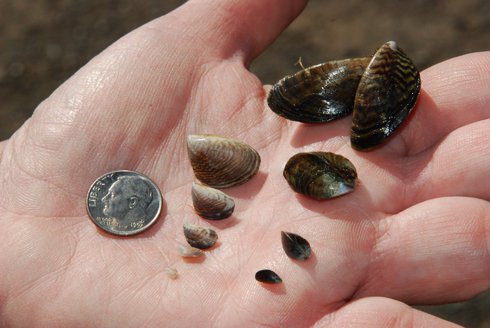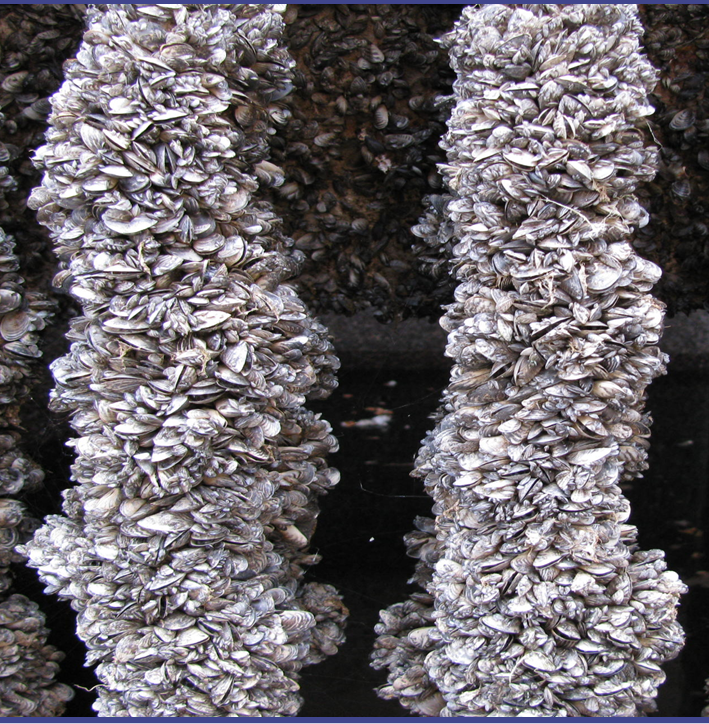Montana, Tribes Seek Partners to Help in Fight Against Invasive Freshwater Mussels
- July 23, 2019
- John Harrison

The Confederated Salish and Kootenai Tribes of the Flathead Reservation and the state of Montana are looking for partners to help in the battle to keep invasive freshwater mussels out of Flathead Lake, which Tom McDonald, the tribes’ fish, wildlife, recreation and conservation division manager called “the jewel of our reservation” in a presentation to the Council at its July meeting in Butte, Montana.
Invasive zebra and quagga mussels can reproduce rapidly and clog water systems and underwater equipment with blankets of hard, calciferous shells, Montana is on the front line of the battle to keep the invasive species, which have infested water bodies in the Midwest and Southwest, out of the state and the Columbia River Basin. Montana’s war on mussels has been aggressive in part because it is the only Northwest state where mussels, or more precisely their larvae, have been detected. Until October of 2016, the regional war on mussels was a matter of concern but not emergency. But then larvae from quagga and zebra mussels were confirmed in water samples from the Tiber Reservoir, located on a Missouri River tributary in eastern Montana. Ongoing sampling found more “suspect” samples in Montana water bodies east of the Continental Divide including the Canyon Ferry Reservoir, Missouri River, and Milk River. So far only the larvae have been found, and state officials hope those populations did not develop further.
The Pacific Northwest Economic Region Foundation has estimated the cost to the Columbia River Basin if the mussels took hold here, fouling submerged equipment at dams, irrigation intakes, docks and other structures, could be as much as $600 million a year, not counting lost recreational dollars, which could total tens of millions of dollars.
Flathead Lake is on the western side of the Continental Divide, and so far no quagga or zebra mussels have been found there. “We cannot allow mussels to infect that water body,” McDonald said. If that happens, he said, there is no stopping them.
He said the best way to stop an invasion is to look at the entire watershed of the lake and its tributaries including, for example, the Flathead River.
“When the threat of zebra and quagga mussels started, our tribes looked at is as, ‘what can we do, how can we stop the threat?’ McDonald said. “We don’t have the authority to manage people outside our reservation. We decided the best way forward was through a partnership with others outside the reservation. The first threat to the whole Columbia system is here in the headwaters of the river.”

The tribes and the state have been effective partners. Thomas Woolf, Montana Fish, Wildlife & Parks Aquatic Invasive Species Bureau Chief, said the state has tripled its inspection and detection program since the 2016 detections east of the Divide. In 2018 the agency received an $837,000 grant from the U.S. Bureau of Reclamation for inspection and decontamination stations, and water sampling and analysis. During its 2019 session, the state Legislature passed two bills related to invasive mussels, one to require decontamination of infested watercraft and one to designate permanent funding for aquatic invasive species prevention.
Eric Hanson, who coordinates the tribes’ aquatic invasive species program, said it’s important to have multiple partners in the fight against mussels. “We all have skin in the game,” he said.
Hanson said longer operating hours for the inspection stations would increase the likelihood of intercepting infested watercraft. Currently, he said, most inspection stations operate 12 hours a day, but increasing that to 16 hours would mean inspectors could observe about 85 percent of the traffic that passes in a day. Currently, the Salish and Kootenai Tribes operate the only inspection station that is open 24 hours. Additionally, while inspections have increased in recent years, he said many people hauling boats into the state still drive past inspection stations even though signs warn them to stop. Failure to stop is an $85 fine, and the watercraft has to return to the nearest inspection station – adding a “time penalty,” as well, he said.
He asked the Council to recognize the role of the Bonneville Power Administration in the prevention effort. Reservoirs behind dams can create conditions for the mussels to thrive. “We are doing as much as we can, but we need additional help,” he said. Mark Reller, Bonneville’s Montana constituent account executive, said the agency has provided funding for watercraft inspections and decontamination through its power business line budget.
Council members praised the combined tribal, state, and federal effort to prevent a mussel invasion. “It’s a human problem to prevent them; it’s not a biological problem until they hit the water," Council Chair Jennifer Anders, a Montana member, said.
The day after the Council meeting she had some personal involvement in the prevention effort. Driving west from Butte on I-90 near the Fairmont Hot Springs exit, she witnessed an SUV with Washington plates pulling a boat on a trailer zoom past a state inspection station. From her cell phone she alerted the Montana Highway Patrol.
Meanwhile, on July 8 Montana Governor Steve Bullock visited an inspection station to highlight the importance of the collaborative effort to inspect and clean infested watercraft. Read a press release here.



